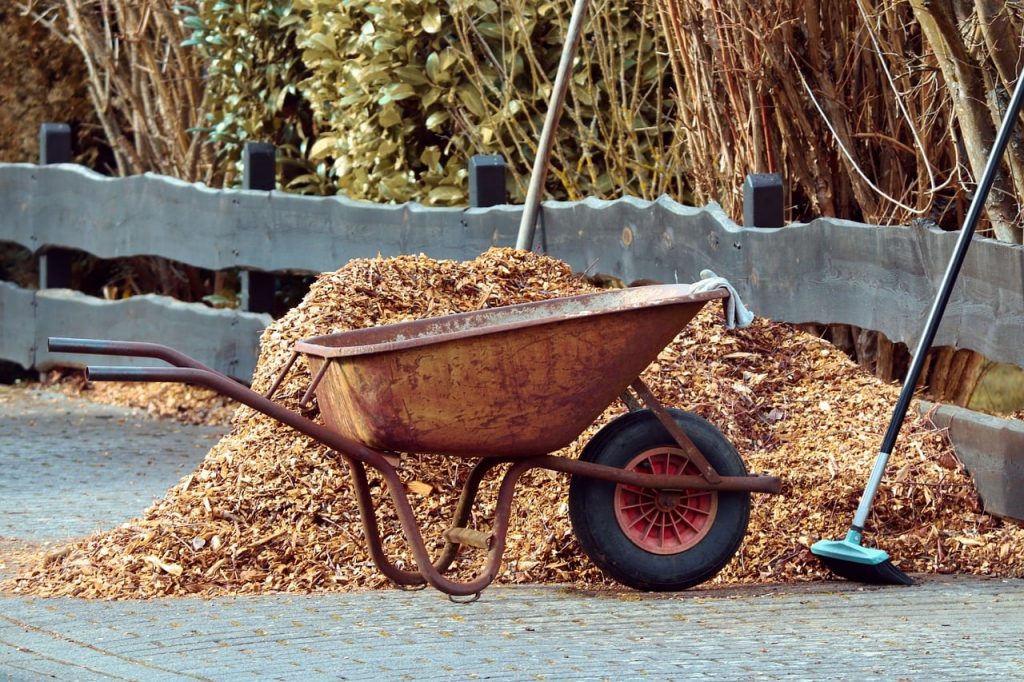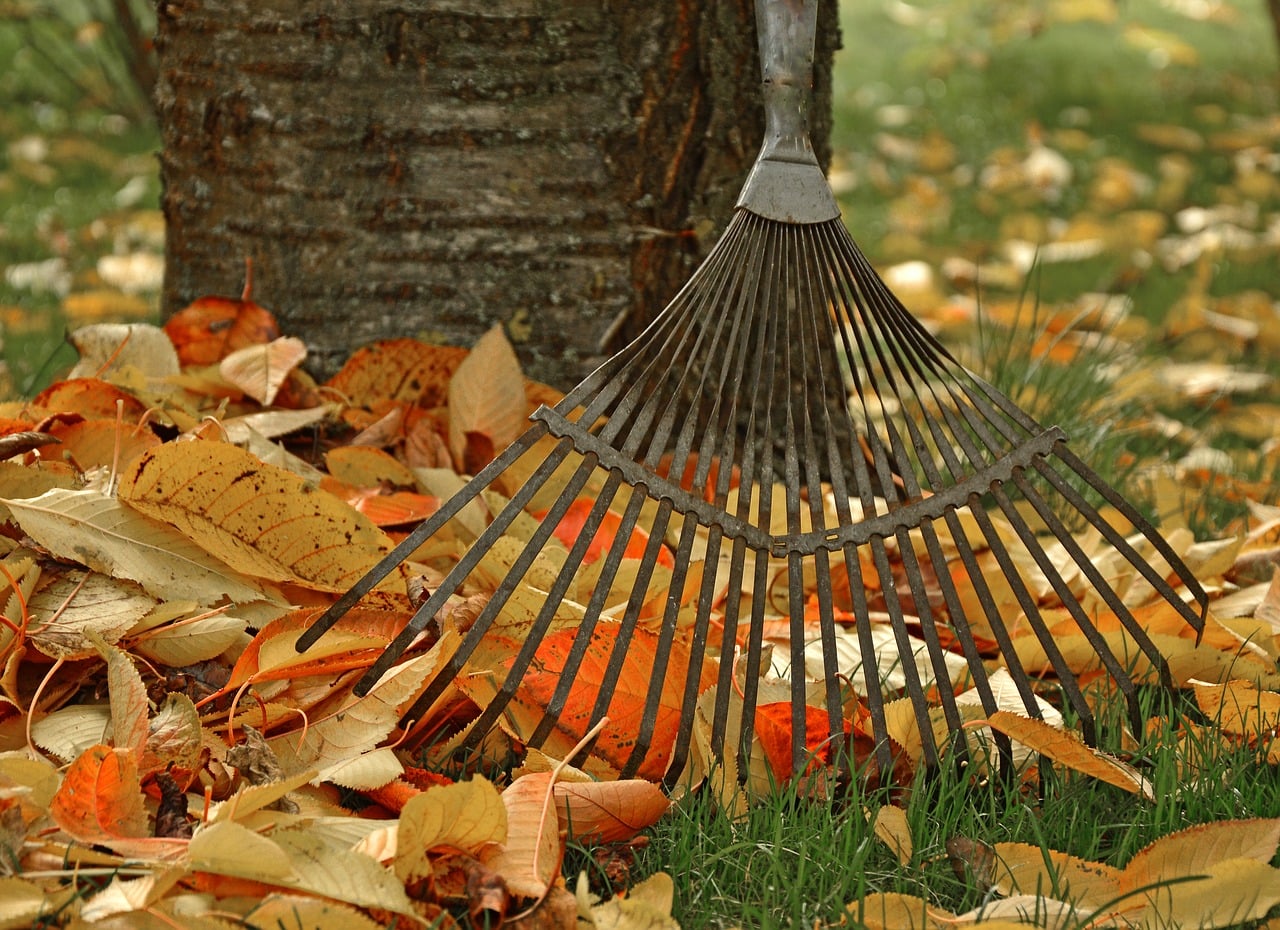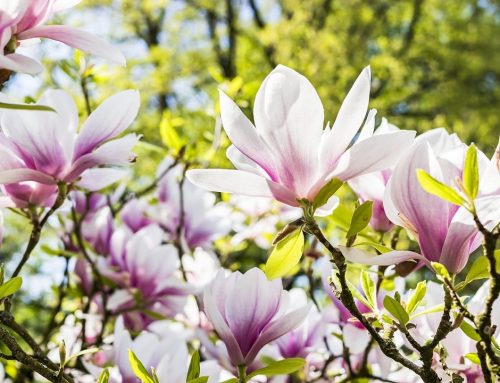Some large animals hibernate. Most, if not all, insects disappear. Most plants take the time to rest and recuperate until warmer temperatures call for springtime reemergence. The intrepid gardener, however, recognises that when most of the rest of the natural world lies dormant, he or she can remain active. Cooler temperatures provide a perfect opportunity to get essential work done in a much healthier environment than the hot summer months.
Although most areas need little or no lawn mowing or lawn care, especially in Sydney’s Eastern Suburbs, Inner West region, and across the city, those maintaining beautiful gardens and properties can do a lot to make sure that it remains attractive and productive into the next growing season.
Move Potted Plants Into Cover Before the First Frost
Even before the first frost of winter settles in, gardeners should move vulnerable potted plants inside where they can receive sufficient warmth and water to stay alive during the cold months. Gardeners must take care to see that the space into which the plants get moved provides sufficient sunlight, water, proper temperature, and other necessities of survival.
Simply moving a plant from outside to a window inside may not always be enough to ensure that the plants thrive, or even survive, during winter. Make sure that the surrounding conditions support the plant and that it does not get placed too close to problems such as heaters.
Reintroduce Moisture Through Aeration
In many areas, gardens and even properly maintained yards can drain the soil of needed moisture. The main symptom of a moisture-poor yard is that it remains dry and compact even after a thorough watering.
During winter, land in such condition can benefit from aeration. Aeration involves poking a set of small holes to allow air, water, and nutrients better access to roots and soil. Extremely dry and compact ground may create conditions where water runs off and has little chance to penetrate the ground. A system of holes provides pockets to trap water and give it a better chance of soaking through to provide essential moisture for plants.
Regular aeration is vital in drier areas and places experiencing extended droughts.
 " data-srcset="/wp-content/uploads/2019/07/winter-gardening-20x13.jpg 20w, /wp-content/uploads/2019/07/winter-gardening-200x133.jpg 200w, /wp-content/uploads/2019/07/winter-gardening-300x200.jpg 300w, /wp-content/uploads/2019/07/winter-gardening-400x267.jpg 400w, /wp-content/uploads/2019/07/winter-gardening-600x400.jpg 600w, /wp-content/uploads/2019/07/winter-gardening-768x512.jpg 768w, /wp-content/uploads/2019/07/winter-gardening-800x533.jpg 800w, /wp-content/uploads/2019/07/winter-gardening-1024x682.jpg 1024w, /wp-content/uploads/2019/07/winter-gardening-1200x800.jpg 1200w, /wp-content/uploads/2019/07/winter-gardening.jpg 1280w" data-sizes="auto" data-orig-sizes="(max-width: 1024px) 100vw, 1024px" />
" data-srcset="/wp-content/uploads/2019/07/winter-gardening-20x13.jpg 20w, /wp-content/uploads/2019/07/winter-gardening-200x133.jpg 200w, /wp-content/uploads/2019/07/winter-gardening-300x200.jpg 300w, /wp-content/uploads/2019/07/winter-gardening-400x267.jpg 400w, /wp-content/uploads/2019/07/winter-gardening-600x400.jpg 600w, /wp-content/uploads/2019/07/winter-gardening-768x512.jpg 768w, /wp-content/uploads/2019/07/winter-gardening-800x533.jpg 800w, /wp-content/uploads/2019/07/winter-gardening-1024x682.jpg 1024w, /wp-content/uploads/2019/07/winter-gardening-1200x800.jpg 1200w, /wp-content/uploads/2019/07/winter-gardening.jpg 1280w" data-sizes="auto" data-orig-sizes="(max-width: 1024px) 100vw, 1024px" />
Use Winter Appropriate Feed
Less is often more, especially when it comes to fertilising garden grounds. Continuing to put high nitrogen fertiliser into the soil during low growth periods wastes resources and money. Smart gardeners and farmers practice precision fertilising. Not only does low nitrogen fertiliser allow soil to rest, it also prevents the leaching of polluting and unnecessary nutrients into streams.
Be Careful When Pruning in Winter
Winter can provide the perfect time to prune and perform hedging tasks, at least with the right plants.
Deciding whether or not to prune in winter depends on both the plants and the climate. For example, many choose to prune roses in the winter in all but the coldest regions. If desired, prune down to the three or four main stems to allow more lush and full growth later.
Other plants that welcome a winter pruning include hydrangeas, wisteria, grapes, and gardenias, among many others.
When in any doubt, consult local experts to determine the best course of pruning action in winter months.
Plants That Can Thrive In Winter
For areas that see cooler temperatures, but without overwhelming amounts of frost and snow, gardeners can plant a number of options that can provide food and beauty in months when many do not even think about gardening.
Available flowering plants in many areas include golden wattles, native fuschias, and banksias. Some peach trees may even flower during August in the late winter. Food cultivators often favour hardy plants like strawberries, peas, spinach, potatoes, broccoli, and others. Winter also provides a great opportunity to tend to edible plants that can thrive inside, such as oregano, thyme, and garlic.
 " data-srcset="/wp-content/uploads/2019/07/winter-garden-20x13.jpg 20w, /wp-content/uploads/2019/07/winter-garden-200x133.jpg 200w, /wp-content/uploads/2019/07/winter-garden-300x200.jpg 300w, /wp-content/uploads/2019/07/winter-garden-400x267.jpg 400w, /wp-content/uploads/2019/07/winter-garden-600x400.jpg 600w, /wp-content/uploads/2019/07/winter-garden-768x512.jpg 768w, /wp-content/uploads/2019/07/winter-garden-800x533.jpg 800w, /wp-content/uploads/2019/07/winter-garden-1024x682.jpg 1024w, /wp-content/uploads/2019/07/winter-garden-1200x800.jpg 1200w, /wp-content/uploads/2019/07/winter-garden.jpg 1280w" data-sizes="auto" data-orig-sizes="(max-width: 1024px) 100vw, 1024px" />
" data-srcset="/wp-content/uploads/2019/07/winter-garden-20x13.jpg 20w, /wp-content/uploads/2019/07/winter-garden-200x133.jpg 200w, /wp-content/uploads/2019/07/winter-garden-300x200.jpg 300w, /wp-content/uploads/2019/07/winter-garden-400x267.jpg 400w, /wp-content/uploads/2019/07/winter-garden-600x400.jpg 600w, /wp-content/uploads/2019/07/winter-garden-768x512.jpg 768w, /wp-content/uploads/2019/07/winter-garden-800x533.jpg 800w, /wp-content/uploads/2019/07/winter-garden-1024x682.jpg 1024w, /wp-content/uploads/2019/07/winter-garden-1200x800.jpg 1200w, /wp-content/uploads/2019/07/winter-garden.jpg 1280w" data-sizes="auto" data-orig-sizes="(max-width: 1024px) 100vw, 1024px" />
Great Time to Finish All of the Necessary Odd Jobs
Even in the coldest areas, active gardeners can still tend to the maintenance of their grounds. Winter provides an excellent opportunity to implement new garden designs and perform garden maintenance. Gardeners can take advantage of dry and cool (but not freezing!) days to get their land in order so that their garden can achieve its full potential in the coming growing season.
Some essential tasks include:
- Checking and shoring up fences and walls
- Cleaning out of trees or bushes marked the summer before as needing removal
- Cutting down of weeds and other overgrown areas
- Add drainage channels in areas that tend to collect too much groundwater in the warmer months
- Feed any citrus plants by late July, using specialised fertiliser
- Plant asparagus, rhubarb, strawberries, and other plants that require winter planting
- Start inside germination of plants needing to go into the ground in spring, including tomatoes and other food producers
Certainly, many of these tasks, outside of the plant specific, can be undertaken in the spring, summer, or fall. Winter, however, has ample days with optimal temperatures for moderate to heavy labour, such as digging, construction, and other important tasks.
Some Pests Do Not Disappear in the Winter
Unfortunately, some garden pests continue their relentless assault during even the cooler months. Especially for those living in areas that do not see frequent frosts and cold temperatures, aphids and other usual suspects will still create problems. While chemical pesticides can be effective, those going the natural route can also perform such home tricks as placing a glass of beer near the garden to attract and drown pests attracted to its natural sugars.
Plants that repel some pests, such as onions and roses, can also help repel pests when placed strategically around the garden.
Winter is time for much of the natural world to rest, but not the avid gardener. Tasks still potentially abound throughout the winter months for those trying to keep their grounds in tip top shape to reach maximum potential throughout the growing season.
Year long effort will make sure that your garden shines its brightest in summer.

 " data-orig-src="/wp-content/uploads/2019/07/winter-garden-maintenance-tips.jpg" data-srcset="/wp-content/uploads/2019/07/winter-garden-maintenance-tips-200x145.jpg 200w, /wp-content/uploads/2019/07/winter-garden-maintenance-tips-400x291.jpg 400w, /wp-content/uploads/2019/07/winter-garden-maintenance-tips-600x436.jpg 600w, /wp-content/uploads/2019/07/winter-garden-maintenance-tips-800x581.jpg 800w, /wp-content/uploads/2019/07/winter-garden-maintenance-tips-1200x872.jpg 1200w, /wp-content/uploads/2019/07/winter-garden-maintenance-tips.jpg 1280w" data-sizes="auto" />
" data-orig-src="/wp-content/uploads/2019/07/winter-garden-maintenance-tips.jpg" data-srcset="/wp-content/uploads/2019/07/winter-garden-maintenance-tips-200x145.jpg 200w, /wp-content/uploads/2019/07/winter-garden-maintenance-tips-400x291.jpg 400w, /wp-content/uploads/2019/07/winter-garden-maintenance-tips-600x436.jpg 600w, /wp-content/uploads/2019/07/winter-garden-maintenance-tips-800x581.jpg 800w, /wp-content/uploads/2019/07/winter-garden-maintenance-tips-1200x872.jpg 1200w, /wp-content/uploads/2019/07/winter-garden-maintenance-tips.jpg 1280w" data-sizes="auto" /> 


